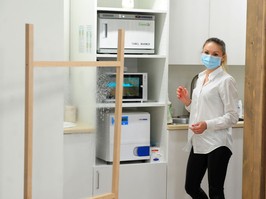shirley, my doctor says hormone therapy is risky, but didn’t expand. my neighbour says my doctor is out-of-date. regardless, i’m not enjoying my life right now. i am having hot flashes and i can’t sleep through the night. all of this, on top of constant brain fog, is impacting how i function at work and at home. can you help me decide what to do?you are not alone in your confusion. hormone therapy is a popular conversation in the menopause chicks community. unfortunately, it has been plagued with decades of misinformation, causing many health professionals and women to be unclear and unsure. add this to the lack of quality women’s health research and education, and women are left fearing the potential risks of hormone therapy without fully understanding the all the benefits.so let’s set the record straight.
what are hormones?
hormones are natural. and even though we’ve been conditioned to treat the word “hormones” like it’s a swear word —
“she’s so hormonal,” — hormones are responsible for hundreds of important jobs in our bodies.for women, cortisol gives us focus, thyroid keeps us energized and comfortably warm, estrogen regulates menstruation, and keeps us juicy — from our joints to our vaginas. progesterone regulates the uterine lining as well as emotions and sleep, and testosterone gives us vitality, sex drive and self-confidence.hormone therapy is a prescription-based protocol designed to restore hormone balance. in perimenopause and post-menopause, women seeking relief from vaginal dryness, sleep and mood issues, hot flashes, heart palpitations, memory loss or brain fog, might choose hormone therapy for current symptom management, as well as a preventative approach to their long-term brain, bone and heart health. hormones play a vital role in blood sugar regulation, libido, mood, energy and alzheimer’s prevention after the age of 50.because every woman is at a different age and stage, and because hormones are constantly fluctuating, hormone therapy requires a very individualized approach and the guidance of a hormone balance expert. this means that what is right for your friend or your sister, may not be right for you. the type of hormone therapy, its length, dosage and mode of delivery will vary, and requires regular monitoring — often with regular tweaking.it’s not surprising that your doctor indicated hormone therapy was risky.
why is hormone therapy considered risky?
hormone therapy was once regarded as the gold standard for women’s midlife health. then in 2002, a study called the
women’s health initiative (whi) came to an abrupt halt three years early. researchers had been studying premarin and provera (brand names for synthetic estrogen and progesterone) and determined they were dangerous. the women in the study ranged from age 50-71. hence, the study’s results — a propensity for blood clots, heart disease, stroke and
breast cancer — should have been expected, as women of this age are naturally more susceptible to heart disease and
breast cancer to begin with.the findings made headline news and rocked the gynecological world, leaving many physicians to question the hormone therapy protocol they had been using to restore patients’ quality of life for decades.less than 10 per cent of all health research is allocated to woman-only research. there was not a lot of research before the whi study, and there hasn’t been a lot since. the whi made a huge compromise in the age of the women in the study. ideally, they would have enrolled 250,000 near 50 year-old participants, randomized the treatment versus placebo, and followed them for 30 years. understandably, that ideal was impossible to recruit. so they settled for half the desired number of study participants, with two-thirds being over the age of 60. sadly this wasn’t communicated with the “hormones cause breast cancer” headlines, and we are still living with the study’s flaws and misconceptions nearly 20 years later.in 2017, the north american menopause society (nams) released an
updated positioning statement on hormone therapy declaring hormone therapy is safe when an individualized risk assessment is conducted, and recommends women begin hormone therapy within 10 years of menopause (the 12-month anniversary of your final period) and before the age of 60.associated risks are generally with pre-existing health conditions, like
obesity, a current breast cancer diagnosis, or a family health history. risks do not apply to everyone, which is why it is so important to discuss your options with an experienced health care professional. you deserve quality of life.i try to encourage women in my community to really question risk. don’t make health decisions based on hearsay or headline news. some women come to me convinced hormone therapy causes breast cancer, but yet they are completely unconcerned that seven times as many women will die of heart disease this year than breast cancer.
it’s heart disease, not cancer, that is the leading cause of death among breast cancer survivors, and hormone therapy can decrease that risk by 30 to 50 per cent.i started taking bioidentical hormones under the care of my naturopath at age 48. i reached menopause at 49 and i am currently 53. my sister had cancer as a child and reached menopause early at age 36. she took hormone therapy from 36 into her sixties.here are three things i would ask you to consider as you decide what’s best for you.
we are the first generation of women to turn 50 and have 50 more years to plan for. a century ago, women barely lived past 50. now, we expect to live to be 100. however, our bodies were not designed to live for five decades without the level of hormone production we enjoy in younger years. choosing hormone therapy could provide immediate health benefits and management of any symptoms that are disrupting quality of life. it can also positively influence your brain, bone, breast and heart health for years to come.
work with a qualified health care professional. find an expert who can guide your hormone balance decisions, and who agrees to work with you and monitor your experiences over time. it’s a very personalized decision. together, you can navigate what is best. don’t know whether your doctor has been trained in hormone balance? ask.
hormone therapy is not a magic wand. it’s more like a rubik’s cube. that means it can take time — a few weeks to months — before a woman can enjoy the health benefits. as hormone levels continue to fluctuate through perimenopause-to-menopause, your prescription may need to be tweaked in order to get it just right for you. there is no one-size-fits-all approach. and please do not start, stop or adjust doses except under the guidance of your prescribing physician.
hormone therapy does not succeed on its own
i would be remiss not to remind women that hormone therapy is an option, and not effective without prioritizing other health elements too. i like to think of a woman’s options in the shape of a three-layer pyramid, with hormone therapy at the top. the bottom layer — the foundation — is lifestyle. it’s critical to address this first — how we eat, move, sleep and manage stress. while these things are essential at any age, they are particularly important as we navigate perimenopause-to-menopause and beyond.the middle level of the pyramid asks what might be missing nutritionally — iron, magnesium, omega 3s, and vitamin b, c and d should all be discussed.
iron deficiency, for example, can mimic hormone imbalance — including thyroid function — so it is very important to test and supplement, especially for women who still have a period.in a perfect world, we would start at the bottom of the pyramid and build up, depending on our own personal experiences. too often, i hear from women who view hormone therapy as a potential quick fix while ignoring the lifestyle factors that are also required in order for there to be optimal and lasting results.
looking for more information on this important health topic? join me & dr. karen parmar, nd for a new perspective on hormone therapy july 9do you have a question about perimenopause, menopause or beyond? post it in our private online community or write to me shirley@menopausechicks.comshirley weir is the founder of menopause chicks, an online facebook community that advocates for women in perimenopause, menopause & beyond! she is also the author of mokita: how to navigate perimenopause with confidence & ease. @menopausechicks

 6 minute read
6 minute read




